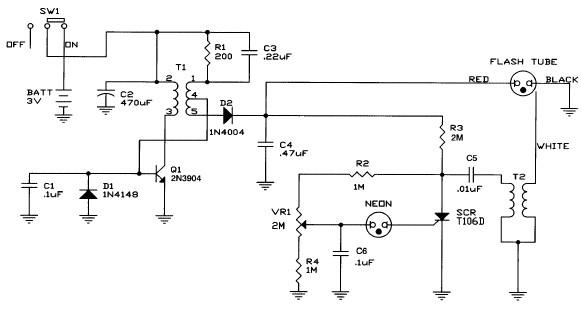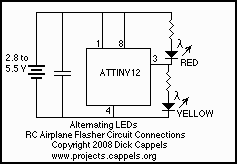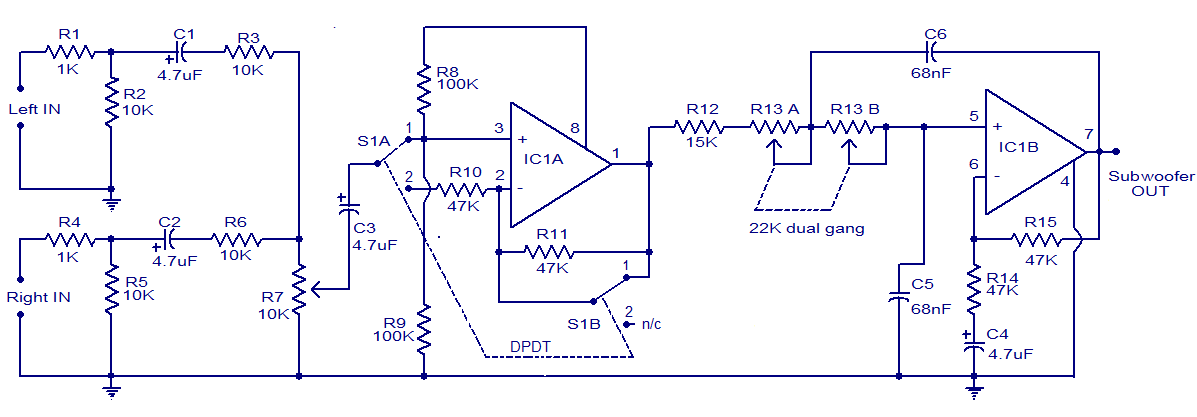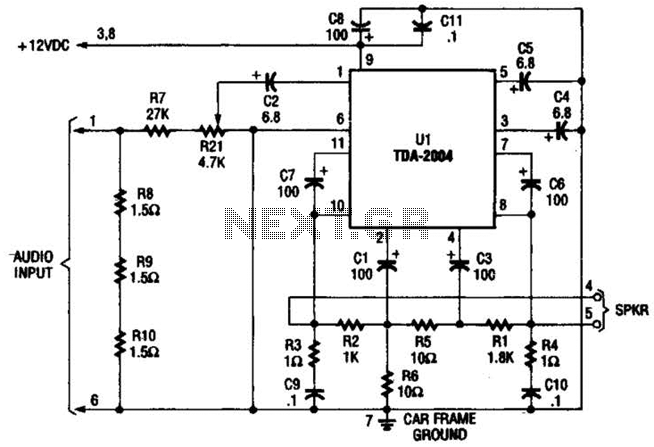
car brake light or headlight flasher
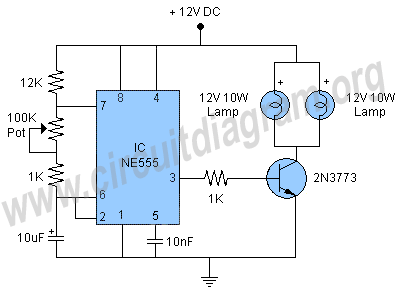
The schematic presented here can be utilized as a circuit for a car brake light or headlight flasher, designed to flash two 10-watt, 12-volt lamps in a car or any vehicle.
This circuit employs a simple flashing mechanism suitable for automotive applications. The primary components include a timer IC (such as the 555 timer), which is configured in astable mode to generate a square wave output, effectively controlling the on-off cycling of the lamps.
The circuit is powered by the vehicle's 12-volt power supply, ensuring compatibility with standard automotive electrical systems. The two 10-watt lamps are connected in parallel to the output of the timer, allowing them to flash simultaneously.
To achieve the desired flashing effect, the frequency and duty cycle of the timer can be adjusted by changing the resistor and capacitor values connected to the timing pins of the IC. A typical configuration might use a capacitor in the range of microfarads and resistors in the kilo-ohm range to set a suitable flashing rate, which can be visually appealing and effective for signaling.
In addition to the timer, a transistor may be included in the circuit to handle the current required by the lamps, ensuring that the timer IC operates within its safe limits. A diode can also be integrated to protect against back EMF generated by the inductive load when the lamps are turned off.
Overall, this schematic provides an efficient and straightforward solution for enhancing vehicle safety through improved visibility of brake lights or headlights, making it a valuable addition to automotive lighting systems.The schematic shown here can be used as a circuit for Car brake light or headlight flasher for flashing two 10 watt 12 volt lamps in car or any vehicle. .. 🔗 External reference
This circuit employs a simple flashing mechanism suitable for automotive applications. The primary components include a timer IC (such as the 555 timer), which is configured in astable mode to generate a square wave output, effectively controlling the on-off cycling of the lamps.
The circuit is powered by the vehicle's 12-volt power supply, ensuring compatibility with standard automotive electrical systems. The two 10-watt lamps are connected in parallel to the output of the timer, allowing them to flash simultaneously.
To achieve the desired flashing effect, the frequency and duty cycle of the timer can be adjusted by changing the resistor and capacitor values connected to the timing pins of the IC. A typical configuration might use a capacitor in the range of microfarads and resistors in the kilo-ohm range to set a suitable flashing rate, which can be visually appealing and effective for signaling.
In addition to the timer, a transistor may be included in the circuit to handle the current required by the lamps, ensuring that the timer IC operates within its safe limits. A diode can also be integrated to protect against back EMF generated by the inductive load when the lamps are turned off.
Overall, this schematic provides an efficient and straightforward solution for enhancing vehicle safety through improved visibility of brake lights or headlights, making it a valuable addition to automotive lighting systems.The schematic shown here can be used as a circuit for Car brake light or headlight flasher for flashing two 10 watt 12 volt lamps in car or any vehicle. .. 🔗 External reference
